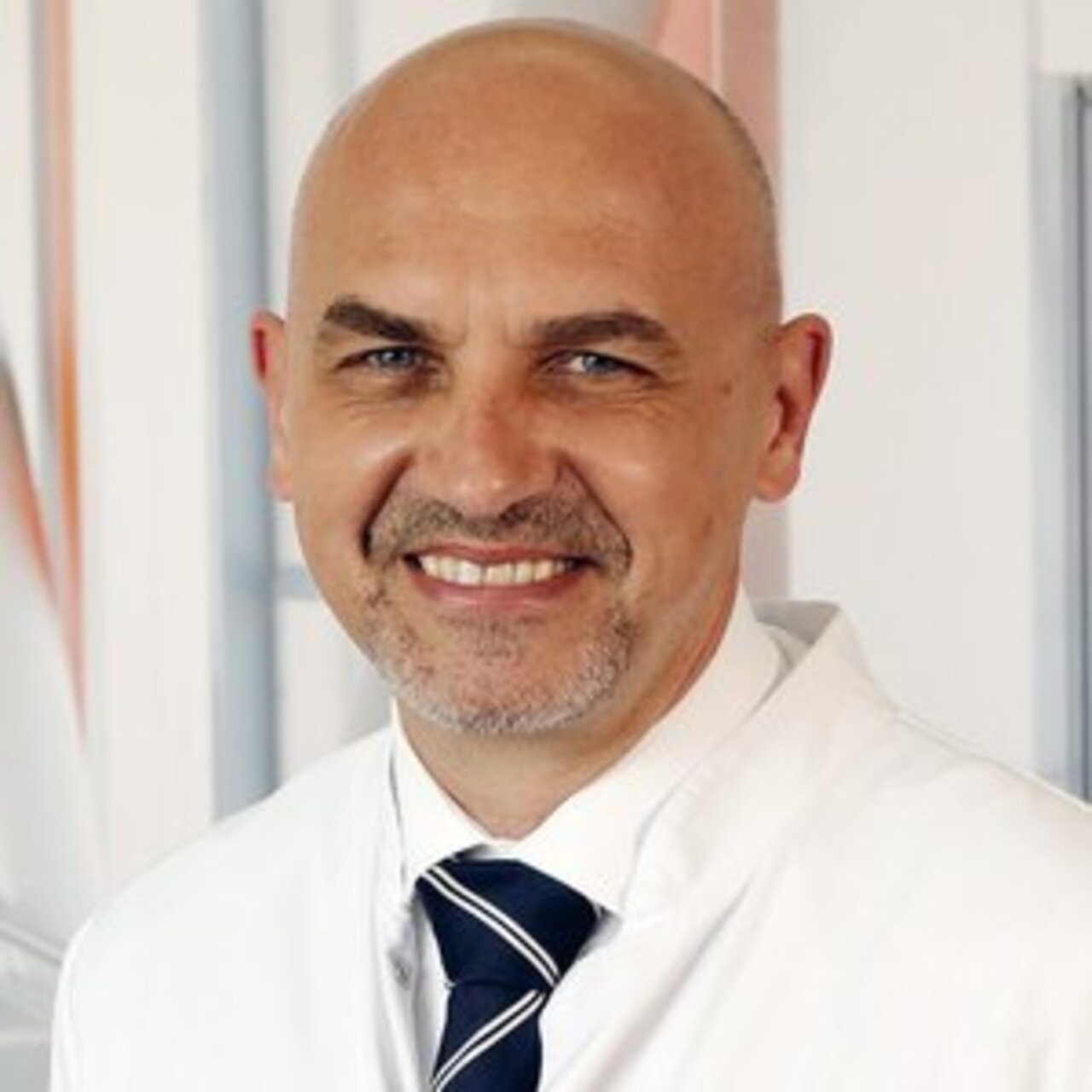Specialists in Aortic Aneurysm Surgery
6 Specialists found
Information About the Field of Aortic Aneurysm Surgery
What Is an Aortic Aneurysm?
An aortic aneurysm is a localized bulge in the aorta. The aorta is the main artery of our body. It arises directly from the left ventricle and initially supplies the arms and head. After this arch, the aorta runs down into the abdomen, branches off to supply the abdominal viscera, and then splits into the leg vessels. In the process, it transports large volumes of blood.
About 80% of all aneurysms affect the aorta. Men are more often affected by aneurysms than women. In almost 90% of cases, the aorta is affected after the exit of the renal artery.
Causes of an Aortic Aneurysm
Causes of an aortic aneurysm can generally be congenital or acquired wall abnormalities. The most common cause of an aortic aneurysm is calcification of the arteries (atherosclerosis). In this process, excess fats are deposited in small cracks in the vessel wall. Over time, this area becomes increasingly larger, making the vessel wall brittle and inflexible, leading to what is known as aneurysm dissecans. Blood can penetrate through cracks between the layers of the wall and cause an outpouching of the vessel wall sac formed. However, congenital connective tissue weaknesses can also cause this (e.g., Marfan syndrome ).
When Does Surgery Become Necessary for an Aortic Aneurysm?
Aortic aneurysms often cause no symptoms. About 30-50% of aortic aneurysms are discovered incidentally by ultrasound or computed tomography.
If symptoms do occur, it is usually pain. For example, back pain and flank pain occur with a vascular outpouching in the abdomen, and chest pain occurs associated with a vascular outpouching in the chest.
An aortic aneurysm's danger lies in the possibility of vessel wall rupture, which can result in extensive blood loss and can be fatal if left untreated. The larger the aortic aneurysm, the greater the risk of rupture of the vessel wall, as more pressure is placed on an increasingly fragile vessel wall.
About 50% of all aneurysms rupture within 10 years. Since emergency surgery cannot save the affected person in many cases, surgery is indicated for an aortic aneurysm size of 5 cm or larger. Aortic aneurysms that are smaller may be observed. Symptomatic aortic aneurysms, on the other hand, regardless of size, always require surgery.
How Is Aortic Aneurysm Surgically Treated?
In the surgical treatment of aortic aneurysm, the specialist of vascular surgery or specialist of thoracic surgery replaces the diseased section of the vessel with a vascular prosthesis made of polyester or Teflon. In the inlay technique, the aneurysm sac is opened, and the clotted blood is removed. The vascular prosthesis is then sewn in, and the vessel is closed again.
An alternative variant is the aortic stent prosthesis. In an interventional procedure (without opening the abdominal cavity), a wire mesh (stent) lined with polyester can be advanced through the inguinal artery into the area of the aneurysm. Imaging techniques check the position. Once the aortic aneurysm is reached, the metal wire is released and unfolds to standard size.
These methods can also treat some thoracic aortic aneurysms. However, in the area of the aorta near the heart, open surgery is often necessary. In some cases, a specialist in thoracic surgery, vascular surgery, or cardiac surgery must also replace the aortic valve (aortic valve replacement surgery) since the aortic aneurysm has extended into this area.
Prognosis and Risks of Aortic Aneurysm Surgery
Prognosis generally depends on the location and size of the aortic aneurysm and the patient's health and age. The lethality is about 40% for emergency surgery, 1-5% for routine surgery, and 1.4% for stenting.
Risks after aortic aneurysm surgery:
- During aortic aneurysm surgery, dilatation of the prosthesis may occur (prosthesis dilatation in up to 20% of cases). Most often, this happens within the first six months after surgery.
- During interventional stent prosthesis delivery, further perfusion and growth of the aortic aneurysm may occur (endoleak).
- Furthermore, detachment or migration of the stent may occur over time (stent disintegration, stent migration).
As a result, follow-up surgery is required in 20% of cases. Regular follow-up of the prosthesis wearer is therefore of absolute necessity to detect any changes at an early stage.
If you have any further questions regarding the variants of aortic aneurysm surgery, please contact your treating specialist in vascular surgery or specialist in thoracic surgery with confidence.
Which Specialists and Clinics Are Specialized in Aortic Aneurysm Surgery?
Every patient who needs aortic aneurysm surgery wants the best medical care. Therefore, the patient is wondering where to find the best clinic for aortic aneurysm surgery.
As this question cannot be answered objectively and a reliable doctor would never claim to be the best one, we can only rely on the doctor's experience. The more aortic aneurysms have been carried out, the more experienced the doctor becomes in his specialty.
An aortic aneurysm should only be operated on by experienced specialists in vascular surgery, thoracic surgery, or cardiac surgery. Vascular centers provide comprehensive diagnosis and treatment of aortic aneurysms.
Sources:
www.gefaesschirurgie.de/fileadmin/websites/dgg/download/LL_Aneurysmen_Bauch_Becken_2011.pdf
www.apotheken-umschau.de/Aneurysma
Herold, Gerd: Innere Medizin. Köln, Eigenverlag 2012.
Henne-Bruns, Doris; Barth, Harald (2012): Chirurgie. 4., aktualis. Aufl. Stuttgart [u.a]: Thieme (Thieme Electronic Book Library).
Arasteh, K. ; Baenkler, H.-W. ; Bieber, C. ; et al.: Innere Medizin. Stuttgart, Georg Thieme Verlag KG 2009.





![[Translate to English:] PD Dr. med. El-Essawi - Portrait [Translate to English:] PD Dr. med. El-Essawi - Portrait](/fileadmin/_processed_/e/0/csm_El-Essawi-Portrait_977dc73321.jpg)
